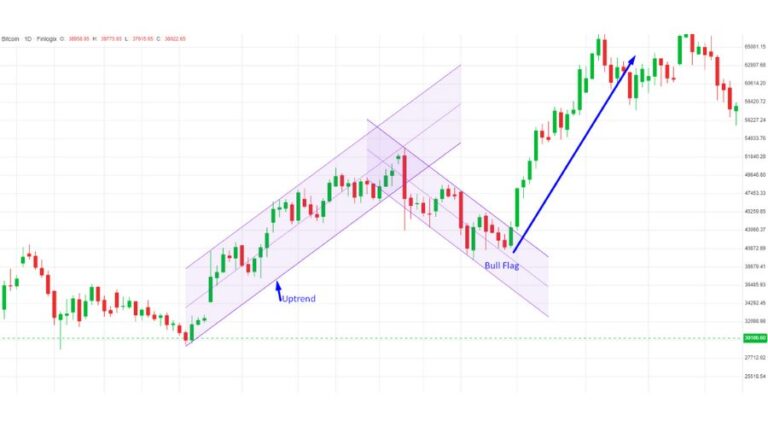Traders rely on a diverse array of technical analysis tools to decipher market data, empowering them to make well-informed choices regarding the buying and selling of securities. Flag pattern is among the most reliable and powerful tools in technical analysis for traders in the stock market. These patterns offer invaluable insights into potential price dynamics, enabling traders to make educated decisions based on market behaviour. Mastering these patterns requires a keen understanding of their characteristics and variations and how to effectively incorporate them into trading strategies. Read on to explore these patterns, their significance, identification methods, and strategies for maximising their utility in stock market analysis.
Know The Basics
These patterns belong to the family of continuation patterns, indicating a temporary pause or consolidation in a prevailing trend before the resumption of the trend’s primary direction. They typically occur after a significant price movement and are characterised by their distinct shape, resembling a flag on a pole. These are marked by two parallel trendlines: the flagpole, representing the initial sharp move, and the flag, representing the subsequent consolidation phase.
Identification of Patterns
Identifying them involves recognising their essential components and understanding their formation dynamics. The flagpole is formed by a swift and substantial price movement, often accompanied by high trading volume, indicating strong momentum. Following the flagpole, the price enters a consolidation phase characterised by smaller price swings and decreasing volume, forming the portion of the pattern. Traders typically look for at least two reaction highs and two reaction lows to draw the trend lines enclosing it.
Types of Patterns
They come in various shapes and sizes, each with its implications for price action. The two primary types are bullish flags and bearish flags. A bullish flag forms during an uptrend, signalling a brief pause before the uptrend resumes. Conversely, a bearish one occurs within a downtrend, indicating a temporary pause before the downtrend continues. Additionally, there are variations such as pennants, similar to flags but with converging trendlines, and wedges, which have contracting trendlines.
Trading Strategies
Mastering them involves identifying them accurately and integrating them effectively into trading strategies. One common approach is to trade the pattern’s breakout. Traders patiently anticipate a price breakout from it, aligning with the prevailing trend and affirming its continuation. Entry points are often placed slightly above or below the flag’s upper or lower trendline, respectively, with stop-loss orders set to manage risk.
Another strategy involves trading the bounce within it. In this approach, traders look for opportunities to enter positions near the lower trendline of a bullish flag or the upper trendline of a bearish flag, anticipating a continuation of the trend. This method allows for tighter stop-loss levels and potentially higher reward-to-risk ratios but requires precise timing and risk management.
Risk Management and Trade Execution
Effective risk management serves as the bedrock of any trading strategy, particularly pivotal when navigating the complexities inherent in trading these patterns. Traders should always define risk tolerance and position size accordingly, ensuring that potential losses are limited in case of adverse price movements. Stop-loss orders are essential tools for controlling risk and should be placed at strategic levels based on their structure and the trader’s risk-reward preferences.
Additionally, trade execution is critical for success when trading them. Before entering trades, traders should wait for confirmation signals, such as a breakout above or below the pattern accompanied by increased volume. Patience and discipline are essential virtues, as premature entries can lead to losses if they fail to materialise or the breakout lacks follow-through.
Flag pattern is a valuable tool for traders in the stock market, offering insights into potential price movements and opportunities for profit. Mastering these patterns requires a solid understanding of their characteristics, identification methods, and trading strategies. By integrating them into their arsenal of technical analysis tools and upholding prudent risk management principles, traders can bolster their chances of success and attain increased consistency in their trading pursuits.

